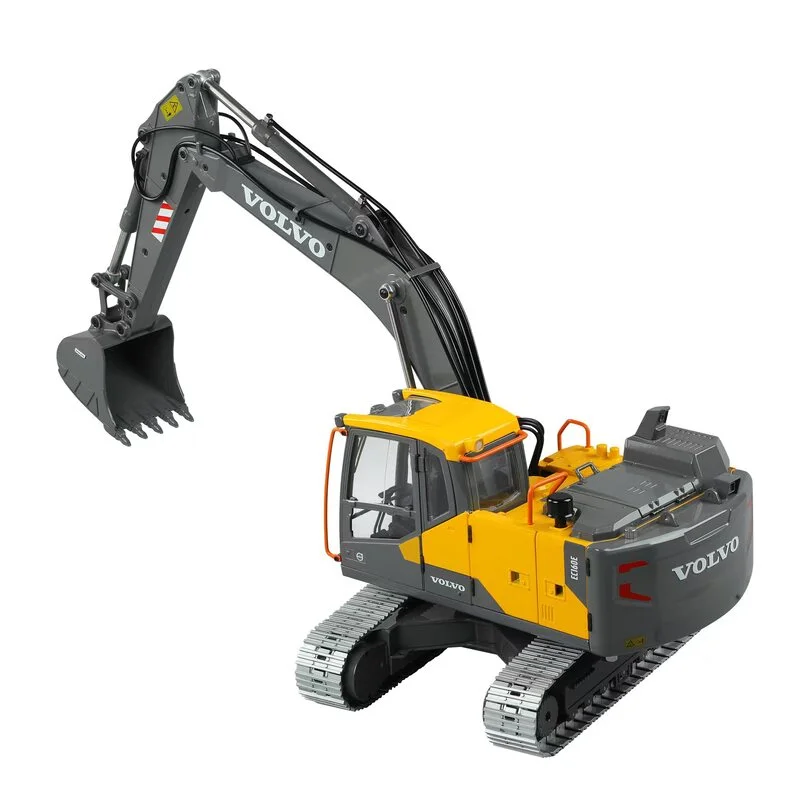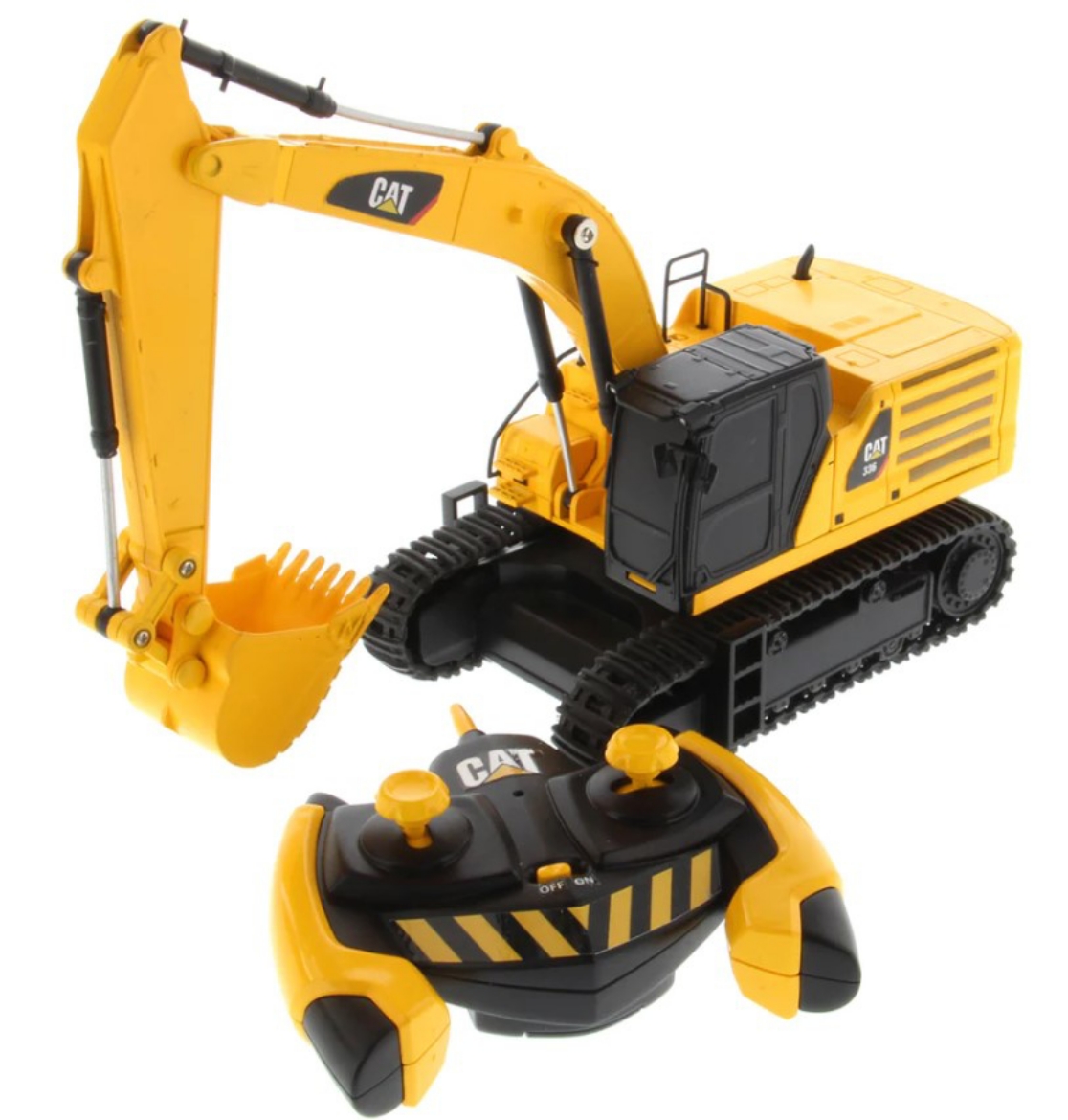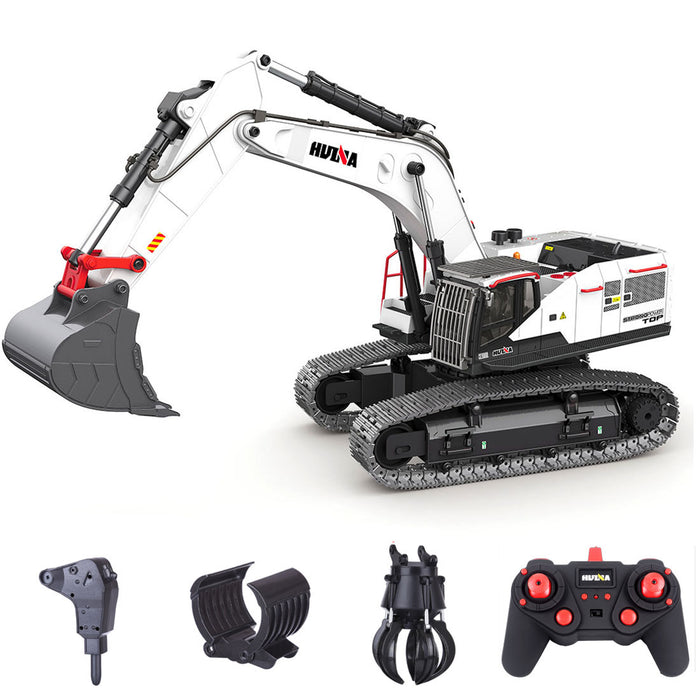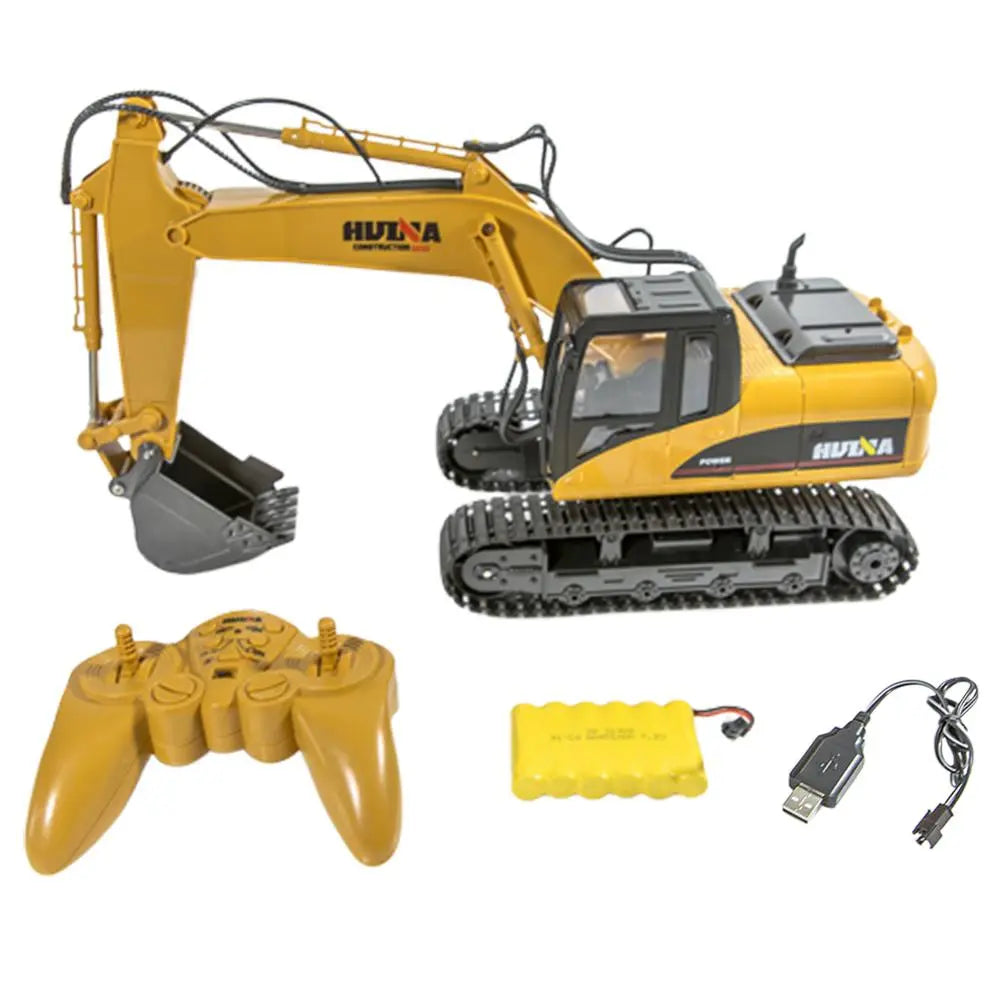The Necessary Attributes of Excavator That Make It a Must-Have Tool
Excavators are important in the building and landscaping industries. Their functional attachments permit a series of jobs, from digging to demolition. Additionally, they boast remarkable excavating depth and reach, powered by robust engines. Driver comfort and portable styles improve functionality in different settings. What truly sets excavators apart are their advanced hydraulic systems and toughness. Comprehending these features can clarify why they are thought about vital devices on any work site.
Versatile Add-ons for Boosted Functionality
Although excavators are powerful makers by themselves, the enhancement of functional accessories greatly improves their performance. These attachments transform a basic excavator right into a multi-purpose tool, ideal for a selection of tasks. Buckets, as an example, come in different sizes and shapes, allowing operators to dig, scoop, and move products efficiently. Hydraulic thumbs can be added for boosted gripping and handling of bulky things, such as logs or rocks.Furthermore, specialized accessories like augers and breakers permit boring and demolition work, expanding the excavator's utility on building sites. remote control excavator. Grapples are an additional option, ideal for sorting and relocating particles. This versatility not only increases performance yet also reduces the need for multiple equipments, conserving time and expenses. By gearing up excavators with the best add-ons, drivers can deal with varied projects, making them vital in the building market
Superior Excavating Depth and Reach
Excavators are designed with premium digging deepness and reach, enabling them to maneuver in limited rooms and accessibility hard-to-reach areas. This capability is vital for numerous building and excavation tasks, where traditional machinery might fail. With flexible boom arms and extendable tracks, excavators can quickly navigate unequal surface while keeping stability.The excavating deepness can differ considerably amongst models, typically varying from 10 to 25 feet, depending upon the design and objective. This attribute enables drivers to excavate foundations, trenches, and other deep frameworks efficiently. Additionally, the reach of an excavator allows for precise digging and material handling without repositioning the machine regularly, saving time and labor costs.Ultimately, the remarkable digging deepness and reach of excavators make them vital for professionals seeking to finish complicated tasks with precision and performance. Their flexibility improves productivity on work websites, showcasing them as a necessary tool in modern building and construction.
Powerful Engine Efficiency

Effective engine efficiency plays a crucial function in the capacities of an excavator when it comes to effectiveness and productivity on building and construction websites. A durable engine creates significant horse power, enabling the maker to tackle durable jobs with convenience - remote control excavator. This strength equates into faster cycle times, allowing drivers to complete jobs much more quickly.Additionally, powerful engines give the needed torque to manage tough terrains and differed lots, making certain that the excavator can do successfully under various conditions. Whether it is raising, digging, or moving products, the engine's performance directly influences the general functional performance of the machine.Furthermore, improvements in engine innovation have actually resulted in boosted fuel performance, minimizing functional costs while keeping power output. Eventually, the engine's performance acts as the backbone of an excavator, verifying its condition as a vital device in the construction industry
Advanced Hydraulic Solutions

Improved Raising Capability
A substantial improvement in raising ability can be credited to advanced hydraulic systems discovered in modern excavators. These systems use high-pressure liquid to generate better pressure, enabling drivers to lift larger tons with convenience. The engineering behind these hydraulics guarantees peak performance, giving an impressive power-to-weight proportion that boosts total efficiency. As a result, excavators can tackle demanding tasks, such as raising large products or equipment, without endangering security. In addition, the robust layout of hydraulic parts contributes to raised longevity and integrity, making them ideal for numerous construction atmospheres. This boosted training capability not just reduces the time needed for projects but additionally minimizes the demand for extra equipment, showing important for both performance and cost-effectiveness in the building sector.
Boosted Precision Control
Traditional excavators usually had a hard time with precision, modern-day hydraulic systems have changed control devices, making it possible for drivers to carry out jobs with amazing accuracy. These innovative systems make use of proportional control shutoffs that enable for smoother and much more responsive activities, considerably lowering the margin for error. Operators can now finely tune the excavator's motions, making it less complicated to browse limited rooms and deal with fragile products. Enhanced comments systems even more inform drivers of real-time performance, guaranteeing perfect coordination in between the machine and operator. This raised precision not only boosts effectiveness yet additionally boosts safety on work sites, decreasing the threat of mishaps. Because of this, modern excavators geared up with advanced hydraulic systems are very useful view devices for building and excavation projects needing thorough precision.
Operator Comfort and Presence
Operator convenience and presence are important components in the layout of contemporary excavators (remote control excavator). Features such as ergonomic seat style, improved exposure choices, and reliable control designs greatly improve the operator's experience and performance. Prioritizing these facets guarantees that drivers can work effectively and safely in various problems
Ergonomic Seat Design
Convenience and visibility are critical in excavator design, with the ergonomic seat playing an essential duty in enhancing the driver's experience. An ergonomic seat is crafted to support the operator's body, lowering tiredness throughout lengthy hours of procedure. Adjustable features, such as seat elevation, backrest angle, and back assistance, accommodate private preferences and advertise optimal position. These modifications boost comfort and enable the driver to preserve concentrate on jobs without pain. In addition, a well-designed seat can supply better side assistance, permitting smoother handling when the excavator functions. This thoughtful style not just boosts efficiency however additionally adds to overall safety and security, ensuring that operators can do their responsibilities properly and efficiently.
Boosted Presence Features
The layout of an excavator extends beyond just the seat, with improved presence functions playing a significant duty in operator convenience and overall safety and security. Large home windows and purposefully located mirrors provide operators with a clear sight of their environments, decreasing dead spots. This style factor to consider permits better spatial understanding, which is crucial in busy workplace. Furthermore, many excavators include rearview cams and progressed monitoring systems that help drivers in maneuvering tight areas. The integration of these exposure features not just advertises safety and security yet additionally lowers driver exhaustion by making it possible for less complicated tracking of workspace. Eventually, improved presence adds to extra effective procedures and aids assure that excavators can execute their jobs successfully and safely.
Control Format Efficiency
While handling facility job sites, an efficient control layout significantly enhances both operator convenience and exposure. A well-designed control configuration assurances that operators can access vital functions with minimal effort, decreasing exhaustion during long hours. Ergonomic joystick placements and intuitive switch arrangements enable seamless procedure, allowing operators to keep concentrate on the job at hand. In addition, clear exposure of both the workplace and the control panel is vital for security and accuracy. Modern excavators usually incorporate flexible seating and control setups to accommodate different operator choices, better enhancing comfort. Inevitably, a thoughtfully made control design not only boosts efficiency yet likewise cultivates a safer working atmosphere by allowing drivers to react promptly to transforming conditions.
Compact Design for Urban Environments
As city building and construction websites typically encounter space restraints, a compact style comes to be crucial for excavators operating in these settings. These equipments are crafted to browse tight areas, permitting for efficient maneuverability in congested task websites. A decreased impact enables them to work closely to existing structures, decreasing disruption and maximizing productivity.The small layout typically includes shorter tracks and a tighter turning distance, promoting operation in narrow alleys and restricted areas. Light-weight products add to alleviate of transportation, making it simpler to move the excavator from one place to one more within the metropolitan landscape.Additionally, numerous compact excavators are geared up with attributes such as extendable arms and functional add-ons, enhancing their capability while keeping a small dimension. This versatility enables drivers to take on a range of tasks, from excavating to demolition, all while fitting seamlessly into the constraints of city atmospheres.

Resilience and Maintenance Considerations
Resilience stands as a vital factor in the efficiency and durability of excavators, particularly popular urban atmospheres. These devices are subjected to strenuous conditions, including varying dirt types, extreme temperature levels, and high-frequency usage. High-quality products and robust construction are essential for guaranteeing that excavators can withstand these obstacles without endangering functionality.Regular upkeep is similarly crucial in preserving sturdiness. Arranged inspections, prompt oil changes, and the substitute of used components add considerably to an excavator's her response life expectancy. Operators must likewise take note of hydraulic systems, tracks, and undercarriages, as these components frequently birth the brunt of wear and tear.Investing in sturdy excavators with comprehensive upkeep plans improves integrity and lessens downtime, eventually bring about increased productivity on building websites. Therefore, comprehending the interaction in between sturdiness and upkeep is essential for any individual taking into consideration the acquisition of Look At This an excavator for metropolitan jobs.
Regularly Asked Questions
How Do Excavators Contrast to Various Other Building And Construction Equipment?
Excavators stick out among building devices as a result of their convenience, allowing tasks such as lifting, grading, and digging. Compared to others, their hydraulic capacities supply greater effectiveness and power, making them essential on various job websites.
What Safety And Security Includes Are Included in Modern Excavators?
Modern excavators incorporate numerous safety and security functions, including rollover protection systems, alarm systems, and progressed exposure enhancements. These elements collaborate to lessen dangers, making certain driver security while improving efficiency on construction websites and various other requiring atmospheres.

Can Excavators Be Made Use Of in Winter Issues?
Excavators can indeed be utilized in wintertime conditions, offered they are furnished with appropriate wintertime accessories and precautions are taken. Proper maintenance and adjustments enhance their efficiency, making sure effective operation despite difficult weather condition situations.
What Is the Ordinary Life-span of an Excavator?
The ordinary life-span of an excavator typically ranges from 7,000 to 10,000 hours of operation. This duration can significantly rely on upkeep practices, running conditions, and the certain model's durability and design functions.
How Do I Choose the Right Excavator Size for My Task?
Choosing the right excavator dimension involves reviewing job scope, website conditions, and product types. Consider variables like reach, depth demands, and weight capacity to guarantee optimal efficiency and safety and security throughout procedure. Dimension issues significantly in job success. Additionally, the reach of an excavator enables for precise digging and product handling without repositioning the device frequently, saving time and labor costs.Ultimately, the superior digging depth and reach of excavators make them important for specialists seeking to complete intricate tasks with precision and efficiency. Comfort and exposure are extremely important in excavator design, with the ergonomic seat playing an important function in improving the driver's experience. The style of an excavator expands beyond just the seat, with enhanced exposure features playing a significant duty in driver comfort and overall safety and security. Modern excavators typically integrate flexible seats and control settings to fit different driver choices, further improving convenience. Light-weight materials contribute to reduce of transportation, making it easier to relocate the excavator from one area to another within the urban landscape.Additionally, numerous compact excavators are furnished with functions such as extendable arms and versatile accessories, improving their capability while keeping a tiny dimension.
Comments on “Why the Double E Volvo rc excavator Stands Out in Excavation and Demolition Projects”